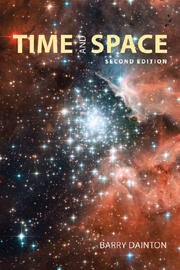Book contents
- Frontmatter
- Contents
- Preface to the second edition
- Preface to the first edition
- 1 Preliminaries
- 2 McTaggart on time's unreality
- 3 The Block universe
- 4 Asymmetries within time
- 5 Tensed time
- 6 Dynamic time
- 7 Time and consciousness
- 8 Time travel
- 9 Conceptions of void
- 10 Space: the classical debate
- 11 Absolute motion
- 12 Motion in spacetime
- 13 Curved space
- 14 Tangible space
- 15 Spatial anti-realism
- 16 Zeno and the continuum I
- 17 Zeno and the continuum II
- 18 Special relativity
- 19 Relativity and reality
- 20 General relativity
- 21 Spacetime metaphysics
- 22 Strings
- Notes
- Glossary
- Web resources
- Bibliography
- Index
16 - Zeno and the continuum I
- Frontmatter
- Contents
- Preface to the second edition
- Preface to the first edition
- 1 Preliminaries
- 2 McTaggart on time's unreality
- 3 The Block universe
- 4 Asymmetries within time
- 5 Tensed time
- 6 Dynamic time
- 7 Time and consciousness
- 8 Time travel
- 9 Conceptions of void
- 10 Space: the classical debate
- 11 Absolute motion
- 12 Motion in spacetime
- 13 Curved space
- 14 Tangible space
- 15 Spatial anti-realism
- 16 Zeno and the continuum I
- 17 Zeno and the continuum II
- 18 Special relativity
- 19 Relativity and reality
- 20 General relativity
- 21 Spacetime metaphysics
- 22 Strings
- Notes
- Glossary
- Web resources
- Bibliography
- Index
Summary
Motion and the continuum
Motion can easily seem the most unproblematic of phenomena. That things do move seems beyond question: as I watch a car moving along the street, or my hand waving in front of my face, I am literally seeing objects in motion, or so it seems natural to say. Even if, as some would hold (see Chapter 7) it is not strictly speaking correct to say that motion is directly perceived, there is no denying that motion is a ubiquitous feature of everyday life. From a more theoretical standpoint, at least in the context of the simpler and more familiar models of space and time (e.g. flat, Euclidean, Newtonian), motion is equally unproblematic: it is simply a matter of an object varying its location in space over time. In more exotic spacetimes there are additional complications, but much remains unchanged. A spacetime is generally viewed as a structured collection of spacetime points, and whether or not one is moving in a spacetime S will be determined by the trajectory one's worldline takes in S, that is, by the points one's worldline passes through. In spacetimes where motion is relative rather than absolute there is no fact of the matter as to who is really moving, but motion itself is easily discerned: two objects are steadily moving towards one another over an interval t1–t2 if the spatial distance between them is steadily decreasing between t1–t2; they are moving apart from one another if the distance is steadily increasing; and they are at rest relative to one another if the distance is unchanging.
- Type
- Chapter
- Information
- Time and Space , pp. 267 - 288Publisher: Acumen PublishingPrint publication year: 2010



